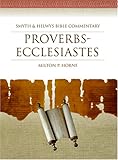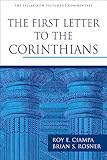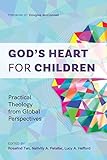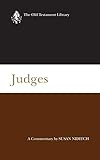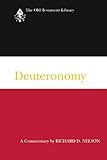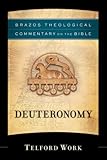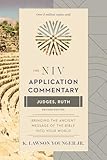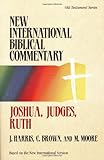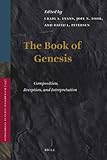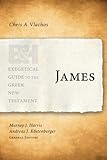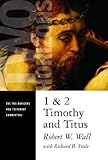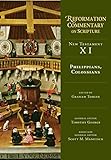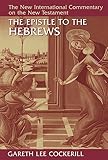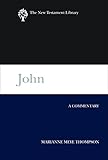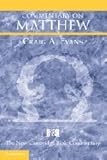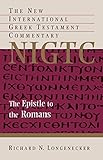MARC details
| 000 -LEADER |
|---|
| fixed length control field |
05978nam a22002057a 4500 |
| 005 - DATE AND TIME OF LATEST TRANSACTION |
|---|
| control field |
20220819144822.0 |
| 007 - PHYSICAL DESCRIPTION FIXED FIELD--GENERAL INFORMATION |
|---|
| fixed length control field |
ta |
| 008 - FIXED-LENGTH DATA ELEMENTS--GENERAL INFORMATION |
|---|
| fixed length control field |
180806s2022 sa ||||fom|d| 001 e eng | |
| 040 ## - CATALOGING SOURCE |
|---|
| Original cataloging agency |
ZA-BrSAT |
| Transcribing agency |
ZA-BrSAT |
| 100 ## - MAIN ENTRY--PERSONAL NAME |
|---|
| 9 (RLIN) |
861 |
| Personal name |
Peltier, Robert Vincent |
| Dates associated with a name |
1952 |
| 245 ## - TITLE STATEMENT |
|---|
| Title |
Using The Shema of Deuteronomy 6:4–5 As a Heuristic Lens to Understand Paul’s Christology in Romans |
| 260 ## - PUBLICATION, DISTRIBUTION, ETC. |
|---|
| Place of publication, distribution, etc. |
Johannesburg |
| Name of publisher, distributor, etc. |
South African Theological Seminary |
| Date of publication, distribution, etc. |
2022 |
| 300 ## - PHYSICAL DESCRIPTION |
|---|
| Extent |
295 |
| Other physical details |
PDF |
| Dimensions |
A4 |
| Accompanying material |
Abstract, TOC |
| 502 ## - DISSERTATION NOTE |
|---|
| Degree type |
Doctor of Philosophy in Theology (PhD) |
| Name of granting institution |
South African Theological Seminary |
| Year degree granted |
2022 |
| Supervisors |
|
| 520 ## - SUMMARY, ETC. |
|---|
| Summary, etc. |
The purpose of this study is to demonstrate that the Shema (Deut 6:4–5) may serve as a heuristic lens to clarify and deepen our understanding of Paul’s Christology in Romans.<br/><br/>The study commences with a two-part literature review. First, the scholarly literature is examined to determine the epistemology of intertextuality as a literary-critical theory. Orthodox intertextuality is assessed as an unacceptable hermeneutical tool as it abandons the essential historical, literary principle of authorial intent and replaces textual meaning with a nebulous construct of countless reader-determined meanings. Further, authorial intent is abrogated, meaning no standard or referent exists for determining absolute truth. These characteristics of orthodox intertextuality make its use in biblical studies problematic. Second, the literature is surveyed to identify scholars who have normalized intertextuality into a biblically sound hermeneutical tool. The literature review shows that biblical intertextuality studies offer the opportunity for revealing new interpretive meaning from a text while studiously avoiding the undesirable portions of orthodox intertextuality.<br/><br/>There are no universally accepted guidelines, definitions, or methodology for identifying intertextual allusion and echoes of the OT in the NT. Thus, a proposed heuristic is developed to evaluate biblical intertexts, including a taxonomy of biblical intertext types and definitions to guide this study, particularly for the identification of intertextual citations, allusions, and echoes. This study presents a proposed methodology for identifying and evaluating candidate allusions and echoes in inter-, intra-, and extra-biblical texts.<br/><br/>Chapter 3reviews the presence of the Shema in Deuteronomy, the remainder of the OT, and the Second Temple literature. The review begins with an exegesis of Deuteronomy 6:4–5 conducted based on the MT, LXX, and NA28 versions of the passage. Based on an analysis of the available OT and NT texts, the Nash Papyrus, and recent archaeological finds, the proper interpretation of Deut 6:4 is determined to be “Hear Israel! The Lord our God is One Lord.” The Shema is the definitive statement of Jewish monotheism expressed by Moses and the Oneness of God by Paul. The remainder of chapter 3 presents an exploration of the context of the Shema found in Second Temple literature.<br/><br/>Chapter 4 shifts the focus of the study to an examination of the Sitz im Leben of the Roman church. Paul writes to the church to address the social/religious friction between Gentile and Jewish believers during the reintegration of returning Jewish Christians following their eviction from Rome. Paul writes of his concern for the church’s unity and his desire to reshape their understanding of the faith experience, particularly concerning the Mosaic Law’s role in salvation. Paul’s understanding of the Oneness of God is a significant theme developed in conjunction with his midrashic interpretive hermeneutic. The chapter concludes with a discussion of Paul’s understanding of the Oneness of God in light of Jewish monotheism.<br/><br/>Chapter 5 integrates the prior work to characterize the intertextual appearance of the Shema as found in many Christological passages in Romans using the methodology developed in chapter 2. A final list of ten intertexts (eight allusions and two echoes) are identified where Paul either alludes to or echoes the Shema when expressing an important feature of his Christology. A further 13 passages marginally failed the analysis methodology are documented for future researchers.<br/><br/>Finally, in chapter 6, the exegetical value of the ten qualified intertexts is examined, particularly how these passages are all strategically located within discourse units in which Paul is addressing a specific Christological teaching. The passages identified as allusions to the Shema are Romans 1:7b; 2:13–15a; 3:29–31; 7:12, 22; 9:4; and 10:6–8, 17. The passages identified as echoes of the Shema are Romans 5:5 and 6:16–18.<br/><br/>Paul often uses allusions or echoes to amplify and sharpen his arguments when he presents or explains a particular aspect of his Christology. Paul’s arguments are often multi-layered, adding substance and depth to his instructions to the Jewish and Gentile Christians. Paul’s allusions and echoes of the Shema may be likened to an added layer of context or emphasis. The presence of the intertexts strengthen Paul’s argument rather than carrying the entire weight of his argument, particularly when addressing Christological topics such as the Oneness of God, justification, and righteousness. The identified allusions and echoes are more appropriately considered as a “force multiplier” in his arguments rather than the “tip of the spear.”<br/><br/>In sum, Paul has reinterpreted the Shema in a midrashic sense to declare that the One God of the Jews is also the One God for all people. Paul has extended the interpreted meaning of the Shema beyond the exclusive province of the Jews to a more universal understanding of the Shema within Paul’s Christology in Romans so that all people may declare that “The Lord our God is One Lord.”<br/> |
| 650 #0 - SUBJECT ADDED ENTRY--TOPICAL TERM |
|---|
| 9 (RLIN) |
368 |
| Topical term or geographic name entry element |
Christology |
| 650 #0 - SUBJECT ADDED ENTRY--TOPICAL TERM |
|---|
| 9 (RLIN) |
863 |
| Topical term or geographic name entry element |
Bible. |
| General subdivision |
Criticism, interpretation, etc. |
| 650 #0 - SUBJECT ADDED ENTRY--TOPICAL TERM |
|---|
| 9 (RLIN) |
862 |
| Topical term or geographic name entry element |
Shemaʻ (The Hebrew word) |
| 942 ## - ADDED ENTRY ELEMENTS (KOHA) |
|---|
| Source of classification or shelving scheme |
Dewey Decimal Classification |
| Koha item type |
Thesis |

